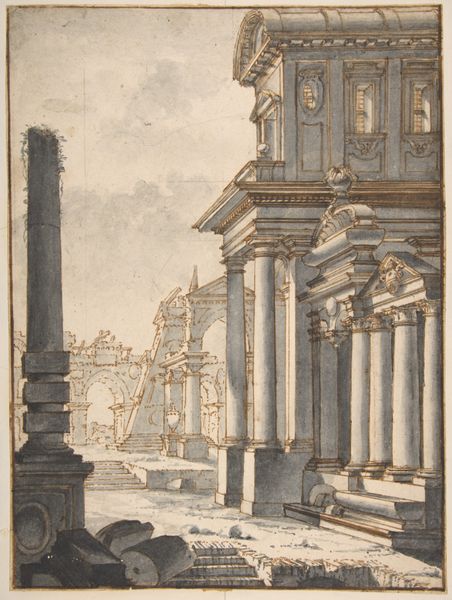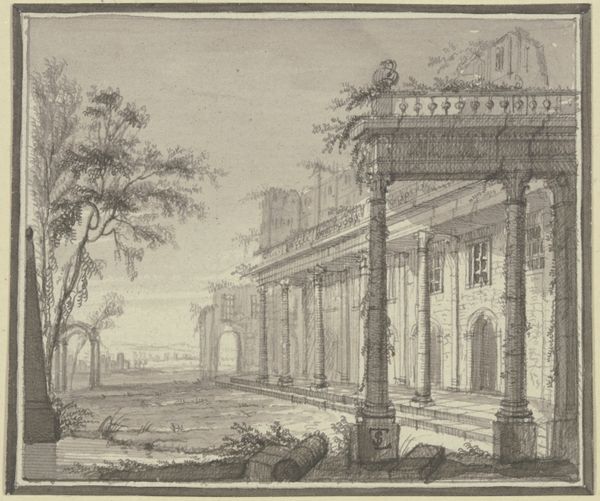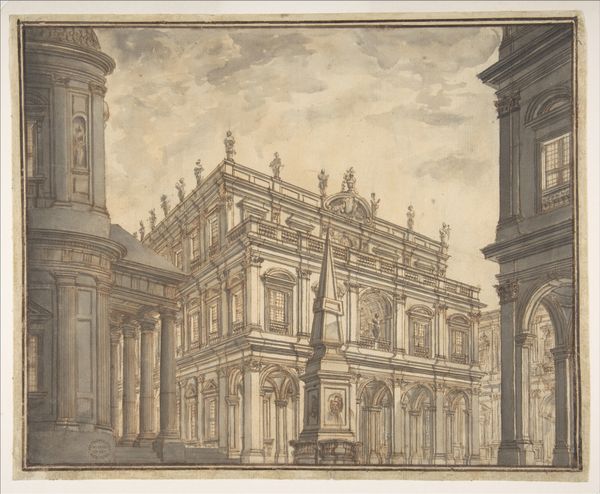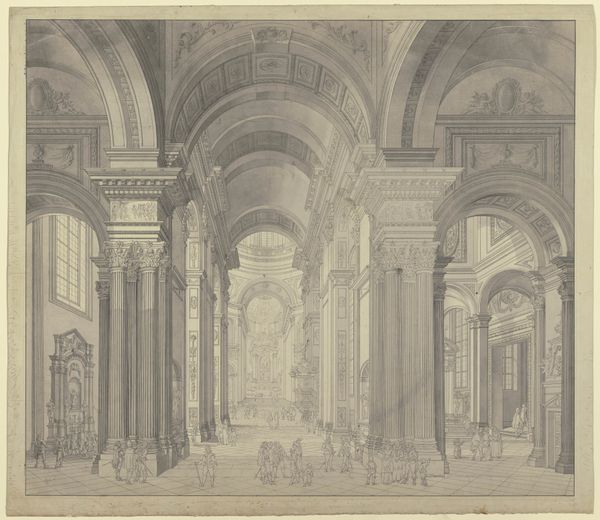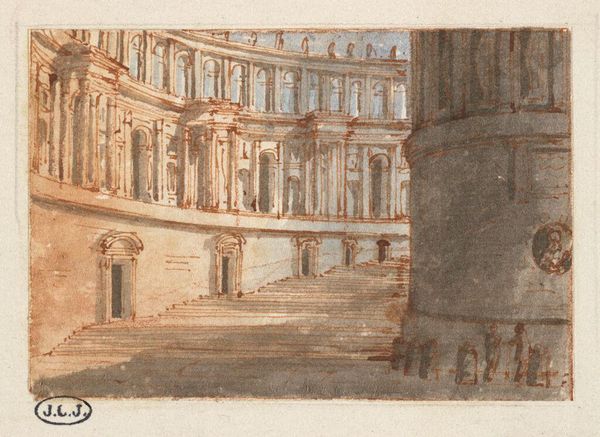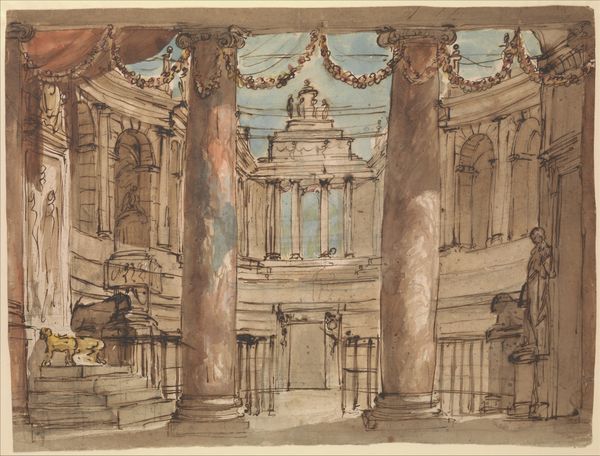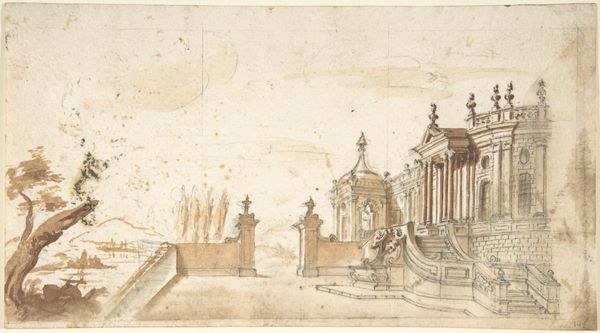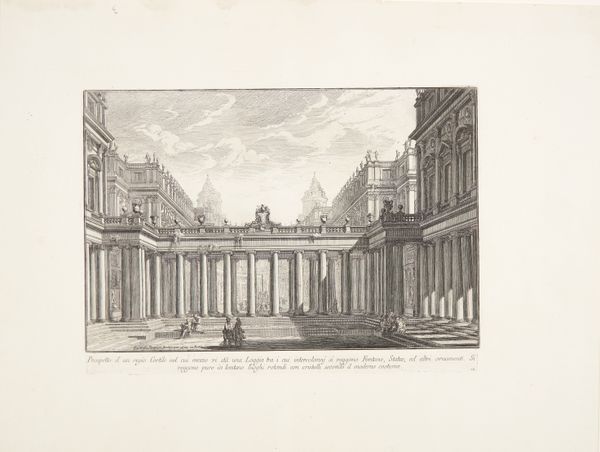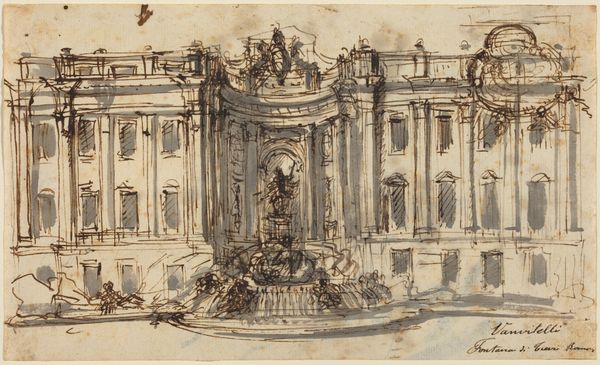
drawing, ink, indian-ink, architecture
#
architectural sketch
#
drawing
#
aged paper
#
toned paper
#
pencil sketch
#
ink
#
coloured pencil
#
coffee painting
#
underpainting
#
indian-ink
#
14_17th-century
#
watercolour illustration
#
pencil art
#
watercolor
#
architecture
Copyright: Public Domain
Ottavio Viviani made this pen and brown ink drawing, Seehafen, links eine Säulenhalle, sometime in the 17th century. The drawing reflects a fascination with classical architecture that swept through Europe at this time. The grand, symmetrical design and the presence of columns and classical figures evoke the power and order of the Roman Empire. But it also speaks to the power of institutions in Viviani’s time, be they civic or religious. European cities invested heavily in these displays of authority. The church and state often supported the arts as a way of glorifying their own power and shaping public opinion. Viviani’s artwork doesn't shy away from this dynamic; it almost seems to celebrate it. It's a reminder that art is rarely created in a vacuum. It's deeply intertwined with the social and political forces of its time. As historians, we look to sources like letters, financial records, and other documents to understand the environment that shaped artists and their creations. Ultimately, art offers a window into the values, beliefs, and power structures of a particular time and place.
Comments
No comments
Be the first to comment and join the conversation on the ultimate creative platform.
